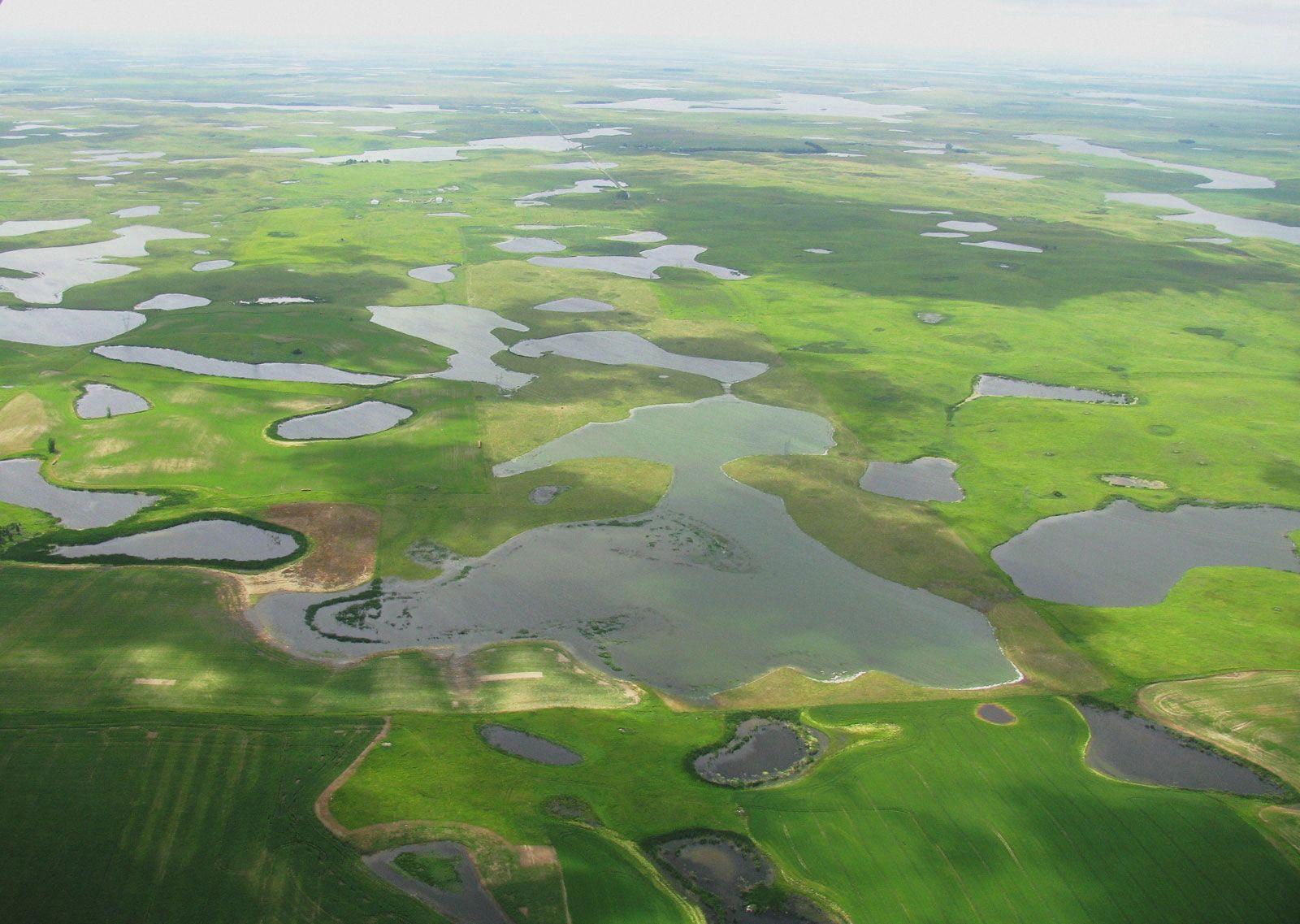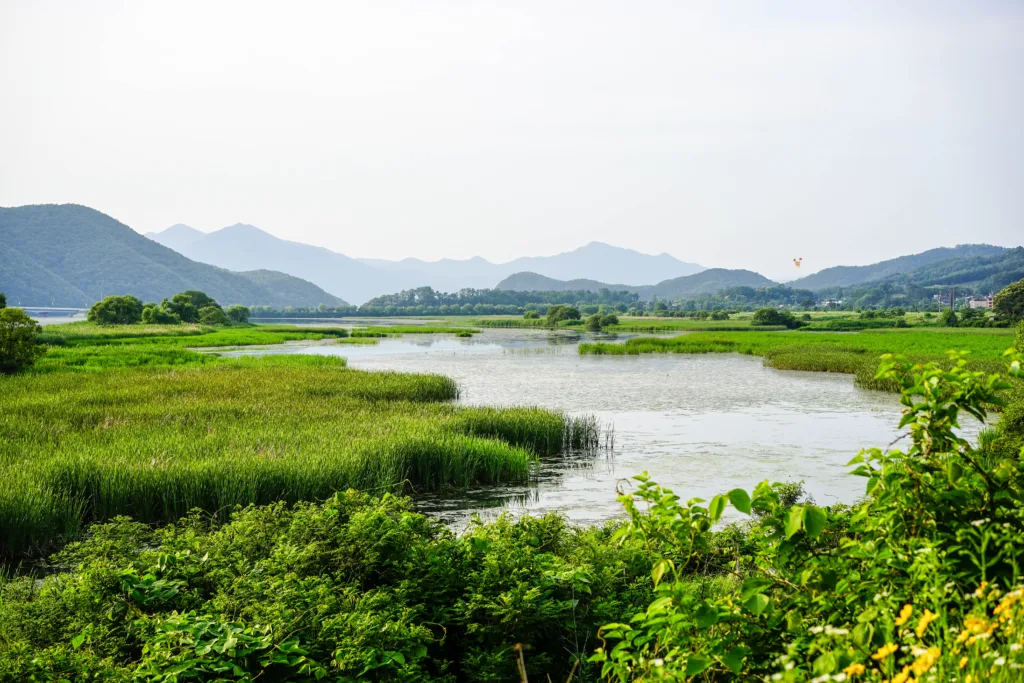Wetlands are unique ecosystems that are characterized by the presence of water at or near the surface of the soil for varying periods of time throughout the year. These ecosystems are vital for the health and well-being of the planet as they provide numerous benefits such as flood control, water purification, and carbon storage. In this article, we will explore how wetlands form and the different types of wetlands found around the world.
Wetlands can form in many ways, but the most common way is throgh a process called succession. Succession is the gradual process of ecological change in an area where there is no soil or where the existing soil has been disturbed. In the case of wetlands, the process of succession begins with an open water body such as a lake or a pond. Over time, sediment and organic material build up on the bottom of the water body, creating a shallow area where plants can begin to grow. These plants, such as cattails and bulrushes, are adapted to living in wet soil and can tolerate periods of flooding.
As the plants continue to grow, they create a dense network of roots and stems that trap even more sediment and organic material, further building up the soil. This process continues until the water body is completely filled in and a wetland is formed. The resulting wetland is typically characterized by a mix of open water, dense vegetation, and saturated soil that can support a variety of plant and animal life.
There are several different types of wetlands found around the world, each with their own unique characteristics and ecological functions. Marshes, for example, are wetlands that are dominated by herbaceous vegetation such as grasses and sedges. They typically have shallow water and are often found along the edges of lakes and rivers.
Swamps, on the other hand, are wetlands that are dominated by trees and shrubs. They are typically found in areas with a high water table and can be either freshwater or saltwater. Mangrove swamps, for example, are found in tropical and subtropical areas and are characterized by the presence of mangrove trees, which are adapted to living in saltwater.
Bogs and fens are another type of wetland that are characterized by the presence of peat, a type of soil that is composed of partially decomposed plant material. Bogs are typically found in areas with a high water table and are fed by rainwater, while fens are fed by groundwater and are often found in areas with mineral-rich soil.
Wetlands are unique ecosystems that form through a process of ecological succession. They are vital for the health and well-being of the planet and support a wide variety of plant and animal life. By understanding how wetlands form and the different types of wetlands found around the world, we can better appreciate the important role they play in our environment.
Characteristics of a Wetland
Wetlands are vital ecosystems for both people and wildlife. But what exactly makes a wetland a wetland? In order for an area of land to be considered a wetland, it must meet three specific criteria.
Firstly, wetlands are characterized by a predominance of hydric soils. These are soils that are saturated or inundated with water for long periods of time, which causes a lack of oxygen and creates conditions that are ideal for specialized wetland vegetation.
The seond criterion is that wetlands are frequently inundated or saturated with surface or groundwater. This means that even during the driest periods, there is still a level of water present in the soil. This sustained saturation allows for the growth of hydrophytic vegetation that is adapted to living in saturated soil conditions.
Wetlands must support a prevalence of hydrophytic vegetation, which is typically made up of plants that are adapted to living in water or wet soil. These plants are essential to the functioning of wetland ecosystems, providing food, shelter, and habitat for a variety of wildlife.
The three things that make a wetland a wetland are hydric soils, frequent inundation or saturation with water, and a prevalence of hydrophytic vegetation. These unique characteristics make wetlands an important and valuable part of our natural environment.

Source: britannica.com
Explaining Wetlands to Kids
Wetlands are unique places where the land is covered by water, either temporarily or permanently. They can be found in different locations, such as near rivers, lakes, or even underground water sources.
Wetlands are important because they serve as a natural filter, purifying the water and cleaning pollutants. They also provde a home for a wide range of plants and animals, including ducks, frogs, turtles, and insects.
Wetlands are easy to identify because of the vegetation that grows in them. These plants have adapted to living in wet soil and water. Some common wetland plants include cattails, bulrushes, and water lilies.
Wetlands can come in different shapes and sizes, from small ponds to large swamps. They can also vary in the type of water they contain, from freshwater to saltwater.
It’s important to protect wetlands and the creatures that live in them. Human activities such as construction, pollution, and filling have destroyed many wetlands. We can help by not littering, conserving water, and supporting wetland conservation efforts.
To summarize, wetlands are unique ecosystems where the land is covered by water, and they are home to a variety of plants and animals. They also serve an important function in purifying water and cleaning pollutants. We should take care to protect and conserve wetlands for future generations.
Formation of Wetlands from Surface Water
Wetlands are unique ecosystems that play an important role in maintaining the balance of our environment. These ecosystems form when surface water, such as runoff from rainfall or snowmelt, enters an area and is retained by the landscape. This water can come from sources such as streams, rivers, or melting snow and ice.
When surface water enters a wetland, it slows down due to the dense vegetation and othr physical features, such as depressions or channels, that exist within the wetland. The slower movement of the water allows sediment and other particles to settle out of the water and onto the wetland floor. This process is known as sedimentation and is an important part of wetland formation.
As the sediment accumulates, it creates a layer of organic material that helps to support the growth of wetland plants. Over time, these plants become established and form the basis of the wetland ecosystem. The plants also help to slow down the movement of water through the wetland, which allows even more sediment to settle out and contributes to the growth of the wetland.
In addition to sedimentation, wetlands can form through a process called succession. This occurs when a body of water, such as a pond or lake, gradually fills in with sediment and becomes a wetland. As the water level decreases, wetland plants begin to grow and eventually replace the open water.
Wetlands are important for a variety of reasons, including their ability to filter pollutants from water, provide habitat for wildlife, and protect against flooding. Understanding how wetlands form and the processes that contribute to their growth is an important step in protecting these valuable ecosystems.
The Definition of Wetlands
Wetlands are areas where the soil is covered with water, either all year round or periodically during the year, including the growing season. Wetlands are essential ecosystems that support a wide variety of plant and animal life. They are also important for maintaining water quality, as they act as natural filters for pollutants. Wetlands can be found in various locations, including coastal areas, riverbanks, and floodplains. They come in different forms, such as swamps, marshes, bogs, and fens. wetlands play a crucial role in maintaining the health and balance of the environment.

Conclusion
Wetlands form through complex and dynamic processes involving water, soil, and vegetation. These ecosystems are crucial for maintaining biodiversity and providing important ecological services such as water filtration and flood control. Wetlands can form through natural processes such as sea level rise, river meandering, and glacial retreat, but they can also be created or restored through human intervention. It is important that we continue to study and protect these unique habitats to ensure their preservation for future generations.
